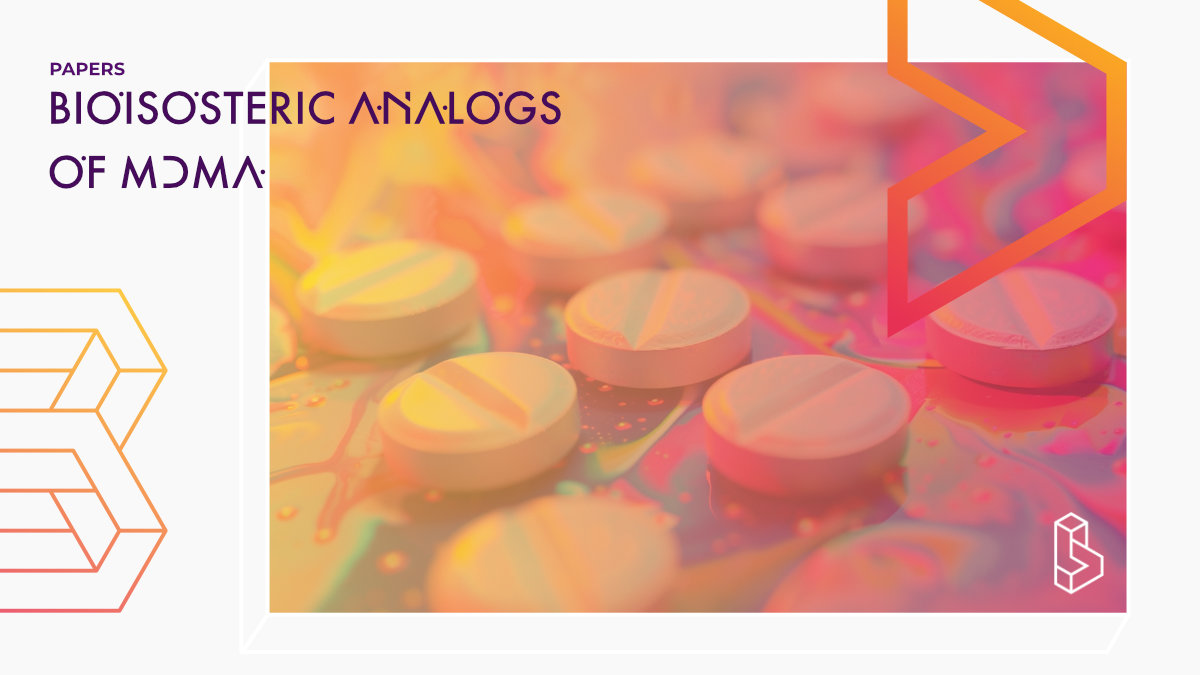This in vitro and in silico study investigates whether three new methylenedioxy bioisosteres of MDMA improve its off-target profile. Compared with MDMA, these bioisosteres (ODMA, TDMA, and SeDMA) show similar activity at human serotonin, dopamine, and norepinephrine transporters but decreased agonist activity at 5-HT2A/2B/2C receptors and different hepatic metabolism, suggesting potential as safer therapeutic alternatives.
Abstract of Bioisosteric analogs of MDMA: Improving the pharmacological profile?
“3,4-Methylenedioxymethamphetamine (MDMA, ‘ecstasy’) is re-emerging in clinical settings as a candidate for the treatment of specific neuropsychiatric disorders (e.g. post-traumatic stress disorder) in combination with psychotherapy. MDMA is a psychoactive drug, typically regarded as an empathogen or entactogen, which leads to transporter-mediated monoamine release. Despite its therapeutic potential, MDMA can induce dose-, individual-, and context-dependent untoward effects outside safe settings. In this study, we investigated whether three new methylenedioxy bioisosteres of MDMA improve its off-target profile. In vitro methods included radiotracer assays, transporter electrophysiology, bioluminescence resonance energy transfer and fluorescence-based assays, pooled human liver microsome/S9 fraction incubations, metabolic stability studies, isozyme mapping, and liquid chromatography coupled to high-resolution mass spectrometry. In silico methods included molecular docking. Compared with MDMA, all three MDMA bioisosteres (ODMA, TDMA, and SeDMA) showed similar pharmacological activity at human serotonin, dopamine, and norepinephrine transporters (hSERT, hDAT, and hNET, respectively) but decreased agonist activity at 5-HT2A/2B/2C receptors. Regarding their hepatic metabolism, they differed from MDMA, with N-demethylation being the only metabolic route shared, and without forming phase II metabolites. In addition, TDMA showed an enhanced intrinsic clearance in comparison to its congeners. Additional screening for their interaction with human organic cation transporters (hOCTs) and plasma membrane monoamine transporter (hPMAT) revealed a weaker interaction of the MDMA analogs with hOCT1, hOCT2, and hPMAT. Our findings suggest that these new MDMA bioisosteres might constitute appealing therapeutic alternatives to MDMA, sparing the primary pharmacological activity at hSERT, hDAT, and hNET, but displaying a reduced activity at 5-HT2A/2B/2C receptors and alternative hepatic metabolism. Whether these MDMA bioisosteres may pose lower risk alternatives to the clinically re-emerging MDMA warrants further studies.”
Authors: Ana Sofia Alberto-Silva, Selina Hemmer, Hailey A. Bock, Leticia Alves da Silva, Kenneth R. Scott, Nina Kastner, Manan Bhatt, Marco Niello, Kathrin Jäntsch, Oliver Kudlacek, Elena Bossi, Thomas Stockner, Markus R. Meyer, John D. McCorvy, Simon D. Brandt, Pierce Kavanagh & Harald H. Sitte
Summary of Bioisosteric analogs of MDMA: Improving the pharmacological profile?
MDMA, ‘ecstasy’, is a psychoactive drug that can induce untoward effects outside safe settings. Three new methylenedioxy bioisosteres of MDMA improved its off- target profile.
MDMA is a psychoactive drug that induces a “controlled altered state of consciousness”. It is being used to treat PTSD in combination with psychotherapy.
MDMA is a ring- substituted amphetamine derivative with psychostimulant activity. It has been described as an empathogen or entactogen, and its acute and chronic side effects range from tachycardia and hypertension to hyperthermia, cardiotoxicity, and hepatotoxicity.
Find this paper
Bioisosteric analogs of MDMA: Improving the pharmacological profile?
https://doi.org/10.1111/jnc.16149
Open Access | Google Scholar | Backup | 🕊
Cite this paper (APA)
Alberto‐Silva, A. S., Hemmer, S., Bock, H. A., da Silva, L. A., Scott, K. R., Kastner, N., ... & Sitte, H. H. (2024). Bioisosteric analogs of MDMA: Improving the pharmacological profile?. Journal of Neurochemistry.
Study details
Compounds studied
MDMA

